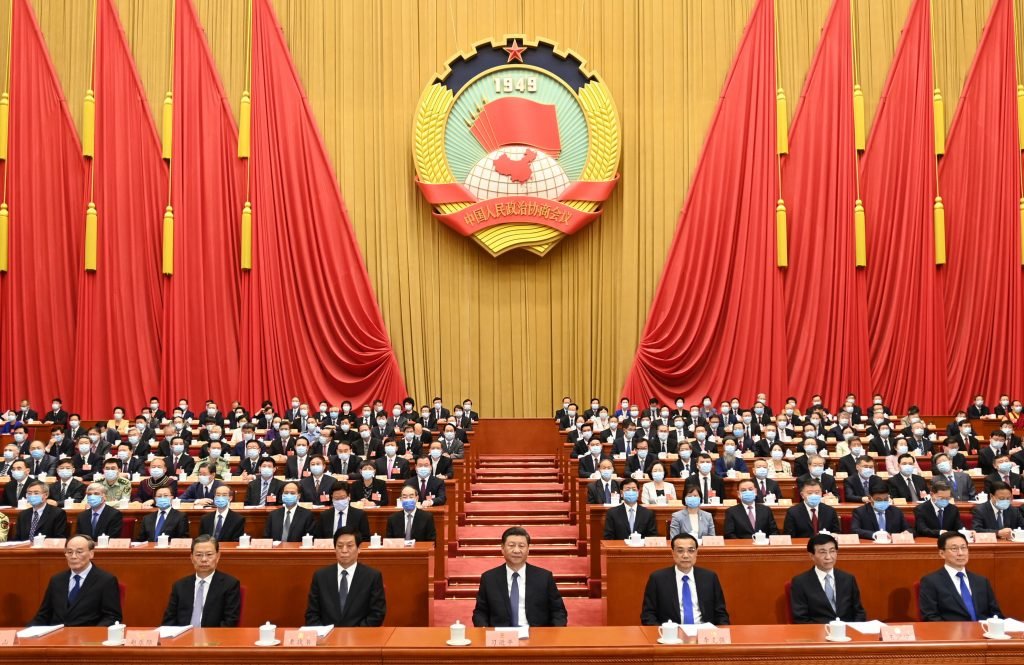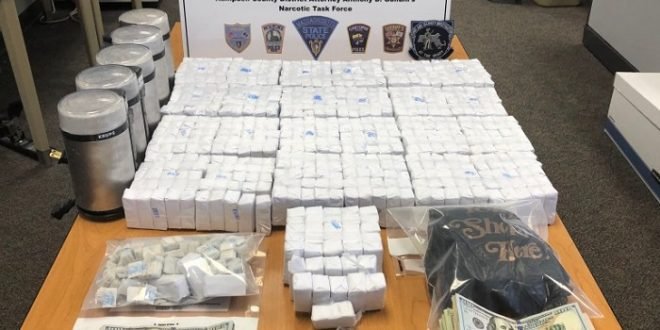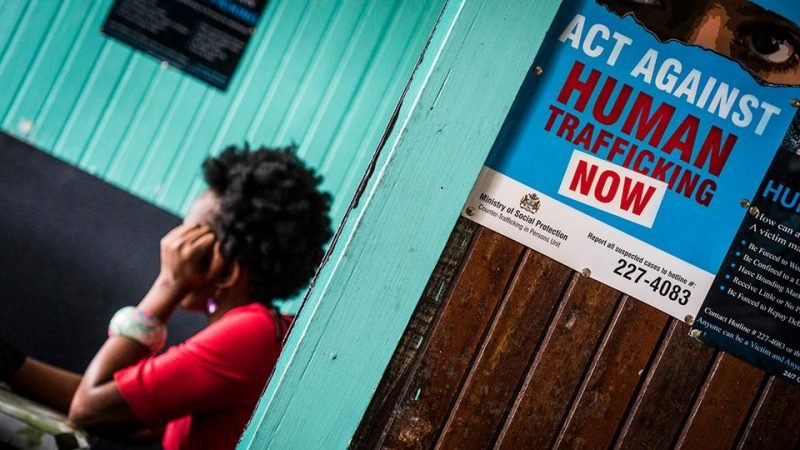Sub regional cooperation driven by profit: The rise of Chinese Transnational Criminal Organizations

The ‘United States Drug Enforcement Administration’ on March, 2021 released an assessment (DEA’s Strategic Intelligence Section, 2021) on extreme fentanyl addiction issue which plagues U.S at the present period, terming the Mexican Cartels as the main culprit for the increase in the fentanyl ratio and an astounding conflation of Chinese Transnational criminals as primary sourcing partner to the Mexican Cartels. Thus, bringing our notice back to the years old Chinese Transnational criminal organizations (TCOs) which still has its roots alive and thriving.
The Chinese TCOs dates back to seventeenth century where they existed as Triads and functioned as secret societies in opposition to the Qing Dynasty. After the fall of the Manchu Dynasty during 1911, the traditional Triads further expanded and became a full-fledge criminal organizations in contrast to the political underlining it served during the Qing Dynasty. The contemporary Chinese TCOs do not comply with the traditional Triad Model but few adhere to call themselves the Triads but are more diverse, transnational and different to the traditional Triad.
The Triads also had a close relationship with the Kuomintang as the popular Shanghai mob boss Du Yuesheng funded Chiang Kai-shek’s political aspirations but after Mao Zedong came to power on 1949, the Triads were forced to move out from mainland China to Hong Kong, Taiwan and also US, Canada and Australia. The Chinese TCOs started expanding globally as early as 1970s where reports of Chinese TCOs running restaurants in Chinatowns of Amsterdam and New York remain pertinent. The Chinese TCOs also started to flourish in mainland China especially in the newly established SEZs of southern China as crackdown on TCOs started in Hong Kong during 1970s.(Hays 2010)
The functioning of the Chinese TCOs can also be deduced by the notice on Jian Zhang, the fentanyl Kingpin by the U.S Department of Justice on August 31, 2021 (U.S Department of Justice, 2021). His company Zaron Bio-Tech (Asia) Limited is registered as the company for food additives production but acts as a cover for fentanyl supply and distribution in U.S and other markets along with money laundering; thus elucidating how the Chinese TCOs legitimises its illicit trade for global distribution.
The Gordian knot of development and exploitation of BRI:
The Belt and Road Initiative (BRI) launched by Xi Jinping during 2013, for the revival of the Land and Maritime Silk Route turned out to be a magnanimous project not only for domestic development of Peoples’ Republic of China (PRC) but also the development of the participating foreign States. The project promised development to the regions ranging from Asia to Africa and a promise of resourceful connection to Europe. The project which is being funded almost $50-100 billion per year has its majority of stake in transport and energy (Dollar, 2020). The drive of development for Capital creation for States cannot be excised from the counter effect of the misuse of the same development for the capital creation by the criminals.

The Greater Mekong Sub region (GMS) is the heart of Maritime Silk Road and part of China- Indochina Peninsula Economic Corridor (CIPEC); however, the planned inland transport routes in South East Asia align with the same routes which have historically been the part of Golden Triangle, popular for narcotics, human trafficking and a series of contrabands production and supply, as the border control and security remain broken in these regions. The Chinese TCOs have long been using the Golden Triangle for its proximity with Yunnan province of PRC for promoting and financing the production and supply of the narcotics especially methamphetamine and other synthetic drugs, for not only domestic and Asian Markets but also to the global markets. The failure of the sub-regional cooperation among the GMS to facilitate security and border control of the region makes it easier for the illegal transactions to occur as the sub- regional cooperation in this region is more focused on the reduction of conflict and distribution of common resources (Dosch & Hensengerth, 2005). The Myanmar question also thus further enhances the security crisis in the region as Shan State in Myanmar remains the largest producer of opium financed by the Chinese TCOs.
The menace of fentanyl overdose in U.S as assessed by the DEA can be directly linked to the development of the Golden Triangle, as the criminals use the same routes as the legitimate trades (Comolli & Rose, 2021) and the involvement of the Chinese TCOs for fulfilling the supply of the same. The TCOs involved in these regions are even estimated to have more revenue than some developing countries (Douglas, 2018) and remains ever increasing, as there were reports of increased illegal activities and movements during 2020. The ports which are developed for the maritime trade under BRI also remain as the major hub for transnational criminal activities as gambling casinos and other entertainment sources are run by the criminals.
Implications on India:
Transnational Crimes and Insurgency
The North East Region (NER) of India shares its borders with the South East Asian countries thus imminently highlighting the risk of spill over effect from the illicit Transnational Crimes which occur in its neighbourhood. China has long been sheltering the high level insurgents from North East ranging groups such as United Liberation Front of Asom–Independent (ULFA-I) to National Socialist Council of Nagaland Isak-Muivah (NSCN-IM) and facilitating their movements to Indo- Myanmar border (Paliwal, 2020), which remains as the no- man’s land. The insurgent movements which was in full swing during the last decade used the same routes in GMS for the militants transport, training and procure contrabands from the Chinese TCOs as the long stretch of India- Myanmar border remains vulnerable due to asymmetrical terrains.
The insurgency do not same have the same appeal as they used to do but the fact remains impertinent that the Chinese TCOs operating in the GMS, makes it easier for the insurgent groups to procure illegal substances ranging from drugs, arms and explosives; as recent as July, 2020 India has seized a huge consignment of arms originating from China (Nanjappa, 2020). The recent blast in Shillong, Meghalaya during 10 August, 2021, proves that the insurgent groups are still capable to cause minor damages and remains a threat to the Indian soil. The insurgents also sustain themselves by trading in drugs with the TCOs in the region.

Menace of Drugs
The United Nations Office on Drugs and Crimes (UNODC) marked the GMS drug route consisted of eastern India along with the Bay of Bengal route as the main region of drugs production and supply for the international markets. The development of the Eastern sector of India along with the developments in the BRI routes of South East Asia thus makes drugs to be easily transported from the Golden Triangle region to NER and finally to the whole of India. The addiction problem remains high in the NER as the long years of insurgency have left the region with fewer development opportunities and the youths turning to the illegal activities to sustain themselves.
Human Trafficking and illegal migration
The Myanmar Coup has shown how easy it is for the illegal migration to take place, with reports of refugees sweeping in from Myanmar to flee from the coup. The development of the infrastructures have not only led to increase in illegal migration but also has increased the amount of human trafficking which takes place through this area, as it has been approximated that a third of the irregular migration use the major roads with official checkpoints in it (United Nations Office on Drugs and Crime, 2019). The Chinese TCOs are notoriously famous for human trafficking pose a threat to the Indian State as the Chinese TCOs have free range of movements collaborating with the local criminal groups for human trafficking; the stories of children and women being trafficked from Imphal–Moreh in India to Myanmar destined for Singapore remain a grim tale (Sharma, 2016).

Wildlife Trafficking
The GMS transport route remains famous for wildlife trafficking acting as a source, transit point or the destination for the products, animal products like Rhinoceros horns, tiger parts, reptiles, bear biles and orchids which remains popular in Chinese markets. Thus, the threat of illegal wildlife trade from India remains in high stakes as UNODC mentions India as the
world’s largest Tiger products supplier in 2013 (United Nations Office on Drugs and Crime, 2013). The newer technological developments makes it hard to trace online payments and end to end encrypted texts, it becomes hard for India to monitor the illegal transactions that take place through India.
Conclusion
The Chinese TCOs is expanding its reach by every passing year along with its markets and is incorporating every illegal activity under it. The GMS has become a hub for the illegal activities to flourish in regard to the weak governance and poor border controls, the transnational transport development in the name of BRI has also increased the amount of illegal activities that take place in this region; the regions of Eastern and Central Africa and Golden Crescent has also seen an increase in the illicit activities. The Development promises the region of economic development and employment opportunities to the locals but the fact remains intact that the TCOs are the main winners in this game. GMS requires a more specific regional cooperation to keep a check on the illegal activities that take place through these regions and also crackdown on the Chinese TCOs is a necessity required to keep them from exploiting the vulnerable areas to their advantage and use as their backyard. The increases in the transnational criminal activities do not only act as a threat to GMS and its neighbours but to whole global development as the criminals start exploiting the loopholes in the system.
India also remains threatened by the TCOs operating in the GMS, thus needs to take its NER policy seriously and start confidence building with the people living in the borders to avoid it from becoming an aid and transit point in the transnational crime network.
References
Comolli, V., & Rose, N. (2021). China’s New Silk Road: Navigating the Organized Crime Risk. Geneva: GI-TOC .
DEA’s Strategic Intelligence Section. (2021). 2020 National Drug Threat Assessment . Washington: Drug Enforcement Administration- U.S Department of Justice.
Dollar, D. (2020, October 01). Seven years into China’s Belt and Road. Retrieved September 5, 2021, from Brookings: https://www.brookings.edu/blog/order-from-chaos/2020/10/01/seven-years-into-chinas-belt-and-road/
Dosch, J., & Hensengerth, O. (2005). Sub-Regional cooperation in Southeast Asia: The Mekong Basin. European Journal of East Asian Studies, 263-285.
Douglas, J. (2018, November 15). Parts of Asia are slipping into the hands of organized crime. Retrieved September 5, 2021, from CNN: https://edition.cnn.com/2018/11/14/opinions/asia-organized-crime-intl/index.html
Hays, J. (2010, April). Triads and organized crime in China. Retrieved September 05, 2021, from Facts and Details: https://web.archive.org/web/20101212055726/http://factsanddetails.com/china.php?itemid=300&catid=8&subcatid=50
Nanjappa, V. (2020, July 21). India seeks probe findings from Thailand, Myanmar. Retrieved September 5, 2021, from OneIndia: https://www.oneindia.com/india/weapons-originating-from-china-india-seeks-probe-findings-from-thailand-myanmar-3122659.html
Paliwal, A. (2020, September 3). China’s Insurgency Card in India’s Northeast Is Overhyped . Retrieved September 5, 2021, from The Diplomat: https://thediplomat.com/2020/09/chinas-insurgency-card-in-indias-northeast-is-overhyped/
Sharma, S. S. (2016). Child Trafficking in the Indo-Myanmar region: A Case study in Manipur. Ministry of Women and Child Development, Government of India.
U.S Department of Justice. (2021, August 31). Department of State Offers Reward for Information to Bring Chinese Fentanyl Trafficker to Justice . Retrieved September 5, 2021, from U.S Department of Justice: https://www.justice.gov/usao-nd/pr/department-state-offers-reward-information-bring-chinese-fentanyl-trafficker-justice
United Nations Office on Drugs and Crime. (2013). Transnational Organized Crime in East Asia and the Pacific. United Nations Office on Drugs and Crime.
United Nations Office on Drugs and Crime. (2019). Transnational Organized Crime in Southeast Asia: Evolution, Growth and Impact. United Nations Office on Drugs and Crime.


















